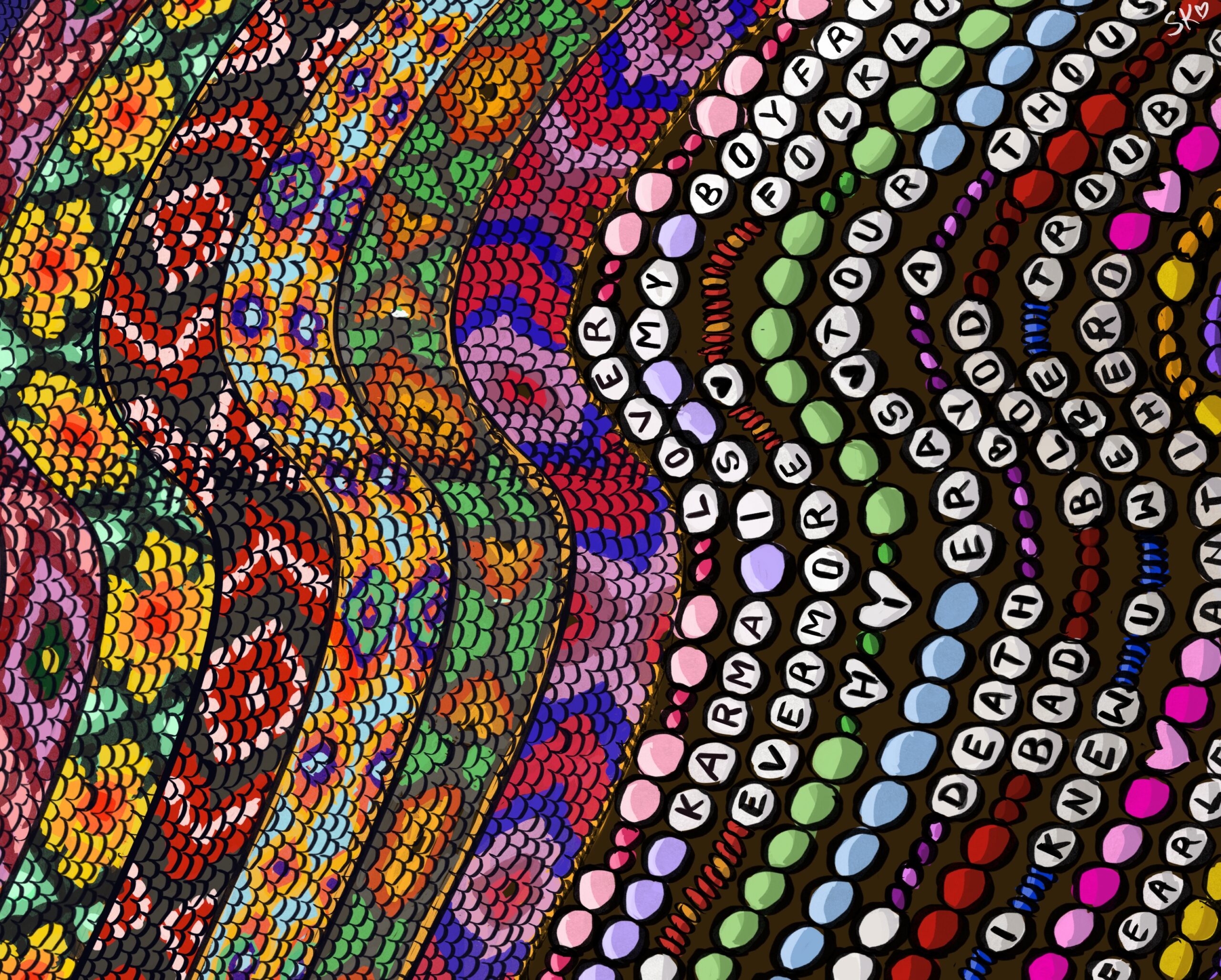The Indigenous origins of friendship bracelets
Despite now being associated with raves, Swifties, and fandoms, the practice of making and trading friendship bracelets has a completely different origin story.
From summer camps to The Eras Tour, friendship bracelets have become increasingly popular, and many stores now sell premade bracelets. However, the practice has an even older history with different traditions, meanings, and importance.
The decorative knot tying commonly used in making woven friendship bracelets has been seen in Ancient China as early as 481-221 B.C., and the bracelets themselves originated from Indigenous peoples, mainly in Central America. Some of the most common patterns of friendship bracelets, such as chevron, diamond, and broken ladder, are based on sixteenth-century Indigenous Navajo weaving patterns. Macrame, another common technique in woven bracelets, has been traced back to thirteenth-century Arab textile art.
These bracelets were made by one friend for another, and were intended to be worn by the recipient until it naturally falls off their wrist. In some cultures, the recipient could make a wish when receiving the bracelet and, once it naturally falls off, the wish is believed to be granted. In others, if the bracelet was removed by the wearer, it represents the end of the friendship.
The colours used in the bracelet also hold meaning. Red often symbolizes honesty, black symbolizes strength, and so on. These colours were chosen to represent the characteristics of the recipient. In recent years, friendship bracelets among Indigenous communities have been worn as a form of solidarity and protest. In the 1980s, bracelets were shared by Mayans in Guatemala who resisted government repression, and in 2016 during protests against the Dakota Access Pipeline in the United States.
Friendship bracelets have now become increasingly popular outside of Indigenous communities. In the 1960s, they became popular among countercultures, a result of North America appropriating “ethnic” clothing and traditions and making them “trendy.” In the 1980s, they trended among children, and were even included in a 1989 episode of Saved by the Bell where the girls make a business selling bracelets at school. In the early 1990s, trading bracelets made their way into the electronic dance music (EDM) scene, particularly with “kandi” bracelets, which use coloured plastic beads. Today, handmade kandi bracelets are a popular phenomenon among many communities, most notably Taylor Swift fans, but also among other groups such as music festivals, Halloween Horror Nights, and even politicians.
However, the popularity of friendship bracelets has some unintended negative effects. Since kandi is the most common form, people make them in large amounts, enough to fill up their arm so they may trade with many other fans. This results in a lot of plastic use, which damages the environment.
This mass production of bracelets also reduces their meaning. While it symbolizes unity within a fandom, sharing so many bracelets with mostly strangers waters down their original meanings from Indigenous cultures. This is especially so with stores now mass-selling friendship bracelets, especially kandi-style ones. What was once a creative form of friendship has now become overly commercialized. Some politicians have begun selling friendship bracelets with their own candidates’ names. This not only contributes to the aforementioned consumerism of these products, but it also appears disrespectful for a government that has historically oppressed Indigenous communities to use a practice originating in these communities to further their own interests.
Of course, friendship bracelets have evolved and are often made with the best intentions. It is important, however, to be aware of and respect their Indigenous origins, as well as to be aware of the impact they may have on the environment, especially the environment of stolen Indigenous land.

